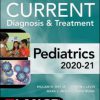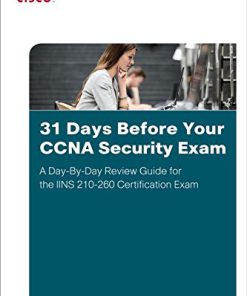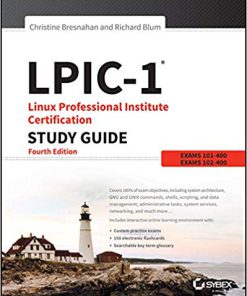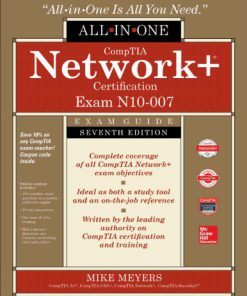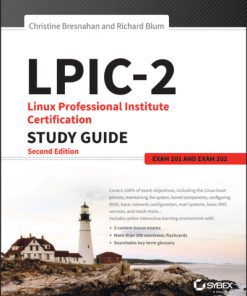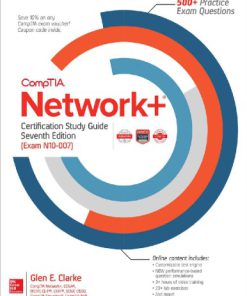The Complete Guide to the ABC Molecular Biology Certification Exam 1st Edition by Tiffany Roy ISBN 1498753922 978-1498753920
$50.00 Original price was: $50.00.$25.00Current price is: $25.00.
The Complete Guide to the ABC Molecular Biology Certification Exam 1st Edition by Tiffany Roy – Ebook PDF Instant Download/Delivery: 1498753922, 978-1498753920
Full download The Complete Guide to the ABC Molecular Biology Certification Exam 1st Edition after payment
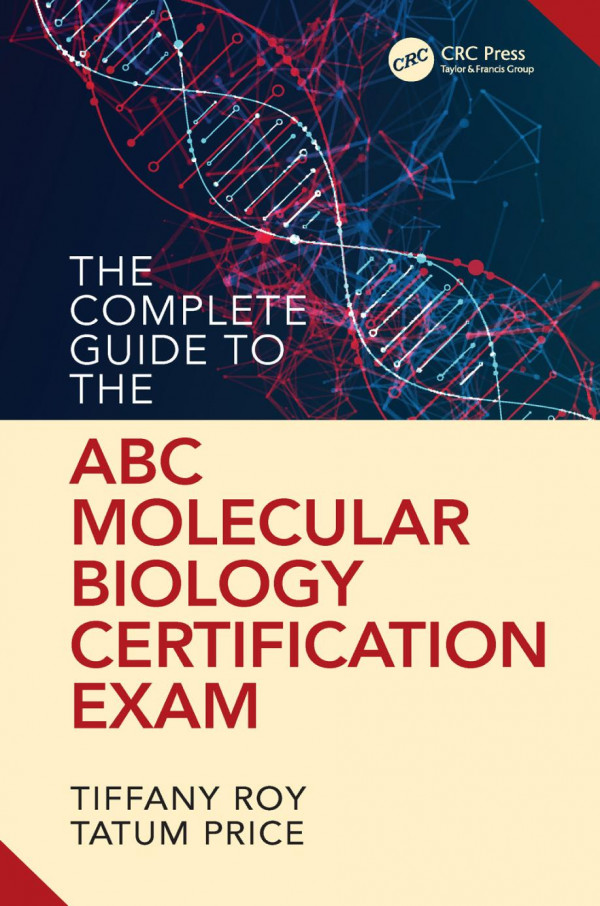
Product details:
ISBN 10: 1498753922
ISBN 13: 978-1498753920
Author: Tiffany Roy
In 2009, the National Academy of Sciences (NAS) authored the report Strengthening Forensic Science in the United States: A Path Forward. In it, the Committee expressed the need for accreditation and certification. Accreditation, long recognized by public labs as an important benchmark in quality, was recognized as an important way to standardize laboratories that provide forensic services. Certification can play an important role as a method of oversight in the forensic sciences―something also recommended by the – National Commission on Forensic Science in October 2014.
The Complete Guide to the ABC’s Molecular Biology is a professional certification examination preparation text for forensic scientists taking the American Board of Criminalistics Examination in Molecular Biology. The book serves as a resource for forensic scientists―who are facing more and more pressure to become certified―to support them in their pursuit of forensic certification.
Table of contents:
1 General Knowledge Introduction
1.1 History
1.1.1 Significant Figures
1.1.2 Evolution of the Practice
1.2 Crime Scene Preservation
1.3 Evidence Handling
1.3.1 Evidence Recognition and Collection
1.3.2 Evidence Packaging and Preservation
1.3.3 Evidence Classes (Class/Individual)
1.4 Crime Laboratory Operations—Overview
1.4.1 Forensic Biology
1.4.2 Controlled Substances
1.4.3 Toxicology
1.4.4 Trace Analysis
1.4.5 Latent Fingerprints
1.4.6 Questioned Documents
1.4.7 Fire Debris
1.4.8 Firearms and Toolmarks
1.4.9 Digital Evidence
Notes
2 Quality Assurance and Quality Control
2.1 Quality Assurance and Quality Control
2.1.1 Accreditation
2.1.2 Accrediting Bodies
2.1.3 Personnel Certification
2.1.4 Standardization
2.2 Quality Assurance/Quality Control Application
2.3 Document/Data Management
2.4 Safety
2.4.1 Chemical Hygiene
2.4.2 Universal Precautions
2.4.3 Hazardous Waste
Bibliography
3 Basic Legal and Scientific Concepts
3.1 Legal Decisions
3.2 Legal Terms
3.3 Court Testimony
3.4 Procedural Law
3.5 General Science Terms and Principles
3.5.1 General Chemistry Concepts
3.5.2 General Biology Concepts
3.5.3 General Physics Concepts
3.5.4 General Physiology Concepts
3.5.5 General Statistics Concepts
3.5.6 Logic
Notes
Bibliography
4 Principles and Concepts of Biological Screening
4.1 Biological Screening Tests
4.1.1 Blood
4.1.1.1 Blood Typing
4.1.1.2 Presumptive Tests for Blood
4.1.1.3 Confirmatory Tests for Blood
4.1.1.4 Blood Species Identification
4.1.2 Semen
4.1.2.1 Components of Semen
4.1.2.2 Presumptive Tests for Semen
4.1.2.3 Confirmatory Tests for Semen
4.1.3 Saliva
4.1.3.1 Presumptive Tests for Saliva
4.1.3.2 Confirmatory Tests for Saliva
4.1.4 Urine
4.1.4.1 Properties of Urine
4.1.4.2 Presumptive Tests for Urine
4.1.4.3 Confirmatory Tests for Urine
4.1.5 Feces
Bibliography
5 Anatomy and Cell Biology
5.1 Anatomy, Physiology, Reproductive Biology
5.1.1 Biochemistry of Physiological Fluids
5.2 Cellular and Molecular Biology
5.2.1 Cell Morphology
5.2.2 Cells and Chromosomes
5.2.3 Chromosomal Organization
5.2.4 Cellular DNA Content
5.2.5 Cell Division
5.2.6 DNA Structure
5.2.7 Transcription and Translation
5.2.8 Replication
5.2.8.1 DNA Organization
5.2.8.2 Replication Forks and Bubbles
5.2.8.3 Enzymes Involved in DNA Replication
5.2.8.4 Proofreading Mechanisms
5.2.9 Mutation Mechanisms and Rates
5.2.9.1 Kinds of Mutations
5.2.9.2 Repair
Bibliography
6 Concepts in Genetics, Biochemistry, and Statistics
6.1 Genetics
6.1.1 Mendelian (Autosomal) Genetics
6.1.1.1 Rules of Inheritance
6.1.1.2 Human Pedigrees
6.1.2 Non-Mendelian
6.1.2.1 Y-Chromosomal Inheritance
6.1.2.2 Mitochondrial DNA
6.1.3 Cytogenetics: Chromosomal Abnormalities
6.1.3.1 Nondisjunction: Mitotic and Meiotic
6.1.3.2 Chromosomal Abnormalities
6.1.4 Genetic Disease
Note
Bibliography
7 Concepts in Genetics, Biochemistry, and Statistics cont.
7.1 Population Genetics
7.1.1 Hardy–Weinberg
7.1.2 Mechanisms of Evolution
7.1.2.1 Mutation
7.1.2.2 Selection
7.1.3 Statistics and Probability
7.1.3.1 Likelihood Ratios
7.1.3.2 Pd and Pi
7.1.4 Population Databases
7.2 Non-Human Molecular Applications
7.2.1 Animal Forensic DNA Applications
7.2.2 Plant Forensic DNA Applications
7.2.3 Microbial DNA Applications
Bibliography
8 History and Standards of DNA Evidence
8.1 Types of Evidence
8.1.1 Criminal
8.1.2 Non-Criminal
8.1.3 Missing-Person/Mass Disaster
8.1.4 Kinship
8.1.5 Databanking
8.2 Evolution of the Discipline
8.2.1 Antigen and Immunological Systems
8.2.2 Protein and Enzyme Polymorphisms
8.2.3 DNA Polymorphisms
8.2.3.1 RFLP
8.2.3.2 PCR, qPCR, RT-PCR
8.2.3.3 Genetic Markers
8.2.3.4 Automation
8.3 Accepted Standards and Practices
8.3.1 Quality Assurance Standards for Forensic DNA Laboratories
8.3.2 Quality Assurance Standards for DNA Databasing Laboratories
8.3.3 SWGDAM
8.3.4 CODIS
8.3.5 Validation for Introduction of New Technologies
Notes
Bibliography
9 DNA Testing Process Part 1
9.1 Casework Documentation and Reporting (Results and Conclusions)
9.1.1 Case Management
9.1.2 Evaluate Requests for Analysis to Determine Appropriate Evidence Screening and Comparisons to Develop the Most Useful Information
9.1.3 Establishing Case Record
9.2 Process Analysis
9.2.1 Considerations of Analytical Limitations
9.2.2 Required Testing Controls
9.3 Reporting
9.3.1 Requirements
9.3.2 Quantitative/Qualitative Conclusions
9.4 Artificial Intelligence
9.4.1 Second Read Software and Automation
9.5 Visualization Tools/Techniques
9.5.1 Microscopy
9.5.2 Electrophoresis
9.5.2.1 Gel Electrophoresis
9.5.2.2 Capillary Electrophoresis
9.5.3 Fluorescence
Notes
Bibliography
10 DNA Testing Process Part 2
10.1 Isolation and Purification of Nucleic Acids
10.1.1 Organic Extraction
10.1.2 Differential Extraction
10.1.3 Chelex Extraction
10.1.4 Silica-Based Extraction
10.2 Quantification
10.2.1 Slot Blot Assay
10.2.2 Intercalating Dye Assay
10.2.3 Quantitative PCR
10.3 Polymerase Chain Reaction
10.4 DNA Typing Technology
10.4.1 Fragment Analysis/Short Tandem Repeat Analysis
10.4.1.1 Theory
10.4.1.2 Application/Processes
10.4.1.3 Interpretation/Results
People also search for:
molecular biology certification exam
molecular biology ascp certification exam study guide
molecular biology certification online
abcc molecular diagnostics
exam molecular biology
Tags:
Tiffany Roy,Complete Guide,Molecular Biology,Certification Exam
You may also like…
Computers - Computer Certification & Training
Mike Meyers’ CompTIA Security+ Certification Guide, Second Edition (Exam SY0-501) Mike Meyers
Medicine - Anesthesiology and Intensive Care
Computers - Computer Certification & Training
Computers - Networking
CompTIA Network+ Certification Study Guide, Seventh Edition (Exam N10-007) Glen E. Clarke [Clarke
Housekeeping & Leisure - Antiques & Collectables
The ABC s of Reloading 10th Edition The Definitive Guide for Novice to Expert Philip Massaro
Computers - Computer Certification & Training
Computers - Networking
CompTIA Network+ certification exam guide: (exam N10-007) Seventh Edition Meyers
Computers - Operating Systems
Computers - Networking
CompTIA Network+ Certification Study Guide, Seventh Edition 1260122050 9781260122053



